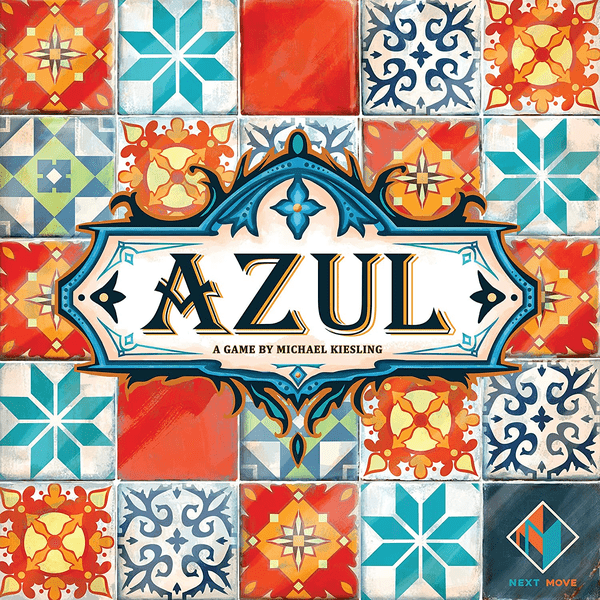Azul (2017) Board Game
Azul is a board game designed by Michael Kiesling and released in in 2017. It quickly gained popularity for its unique gameplay and stunning components. Set in the Renaissance period, players take on the role of artisans decorating the walls of the Royal Palace of Evora in Portugal.
Game Components of Azul
How To Setup Azul
To set up Azul, each player takes a playing mat and places it in front of them with their scoring cube on the 0. A number of “Factory displays” (determined by the player count) are arranged in the center of the table in a circle and seeded with 4 tiles apiece from the bag. A starting player is chosen and receives the starting player token.
Gameplay Mechanics and Game Objective
Gameplay Mechanics
Game Objective
Player Experience
Playing Azul involves a mix of strategy and tactical thinking. The game is easy to learn but challenging to master, as players must constantly make decisions about which tiles to pick and where to place them to maximize their score. The game requires anticipating other players’ moves and adjusting strategies accordingly, making it engaging and competitive.
Pros
Cons
Personal Thoughts on Azul
Azul is a game that caters to a wide range of players, from casual gamers to strategy enthusiasts. It is ideal for family game nights or as an introductory game to more complex board games. The combination of its beautiful artwork, simple yet deep gameplay, and high replayability makes it a standout in the board game community. If you enjoy strategic thinking and tactical gameplay with a touch of randomness, Azul is definitely worth checking out.
We are supported by our audience. When you purchase through links on our site, we may earn an affiliate commission, at no extra cost for you. Learn more.

